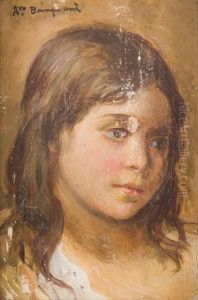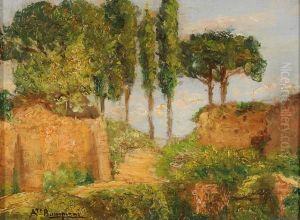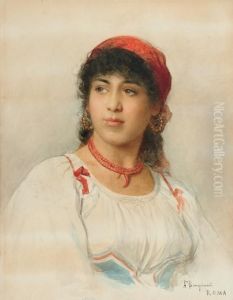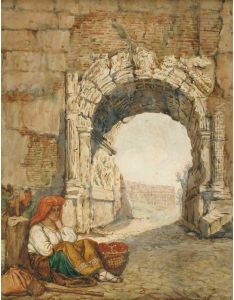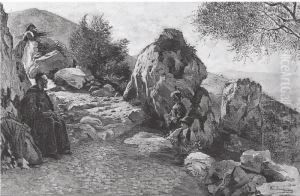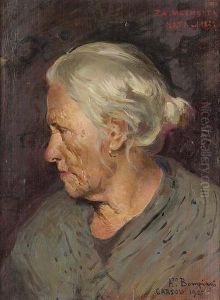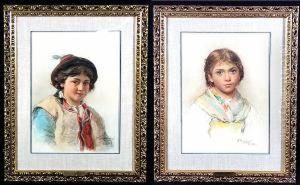Augusto Bompiani Paintings
Augusto Bompiani was an Italian painter, born in Rome in 1852 and died in 1930. He belonged to the late 19th century and early 20th century school of Italian art, a period marked by significant transitions and the exploration of new artistic frontiers. Bompiani’s body of work is characterized by its versatility, encompassing a variety of subjects including portraits, landscapes, historical scenes, and genre paintings. His style evolved over his career, reflecting the influences of the major artistic movements of his time, yet he maintained a distinctive voice that was recognized and celebrated by his contemporaries.
Educated at the Accademia di San Luca in Rome, Bompiani was deeply influenced by the rich artistic heritage of his hometown. Rome's history, its monuments, and its vibrant cultural life provided endless inspiration for his work. Throughout his career, Bompiani exhibited a profound mastery of light and shadow, a trait that added a dramatic quality to his compositions. He was also known for his exceptional skill in capturing the nuances of human expression, making his portraits particularly compelling.
Bompiani was active during a period of significant cultural and political change in Italy. He witnessed the unification of Italy and the rise of Rome as the capital of the newly unified country. These events provided a rich backdrop for his work, which often explored themes related to Italian history and identity. Despite the changing artistic trends of his time, including the emergence of Modernism, Bompiani remained committed to the classical traditions of Italian art, yet he was not immune to the influences of contemporary movements. His work shows traces of Realism and later, elements of Impressionism, demonstrating his ability to adapt and evolve while maintaining a link to the past.
Throughout his lifetime, Augusto Bompiani participated in numerous exhibitions, both in Italy and abroad, earning accolades for his artistic achievements. His paintings were collected by both private collectors and public institutions, attesting to his widespread recognition and popularity. Today, Bompiani's works can be found in museums and galleries across Italy, serving as a testament to his enduring contribution to the Italian art scene. His legacy is that of a versatile artist who bridged the gap between traditional Italian art and the emerging styles of the early 20th century, leaving behind a body of work that continues to be appreciated for its beauty and historical value.








